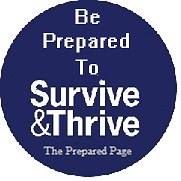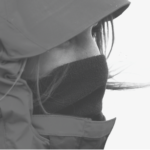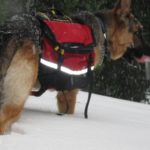Volcano Preparedness
Lessons Learned from Mt. St. Helen
As recently as April 2021 a volcano erupted in the Caribbean. Now however rare eruptions do happen as and not always in a far off location as was evidenced by MT St Helen in Washington state some years ago.
You don’t have to live on the volcano or even at the base to be effected by an eruption! Depending on the size of the mountain itself, the velocity of the explosion and wind currents the damage can affect those hundreds of miles away. See a list of volcanoes around the world here >>
Let’s talk about preparing for and protecting yourself and your property from volcano eruptions.
Before an alert goes out: (the value of each item will become evident)
Put together an emergency supply kit
- Flash light and extra batteries
- A minimum of 72 hours of food and water for each member of your family or group
- 1st aid kit and a book or instruction manual if available to assist you in using it
- Any medications you or your group might need
- Any hand tools you may need IE.. can opener, knife, paracord, etc..
- A good pair of sturdy well fitting boots for each member of the group/family
- Respiratory masks a N-95 disposable respirator is preferred but in a pinch any mask is better than none.
- Eye goggles for each group/family member
- A battery operated radio and extra batteries
- A tarp for the engine of each vehicle
- A car cover for each vehicle
- A heavy duty Shop vacuum
- Heavy coveralls for each member of the group/family
- A snow rake
- Extra oil and air filters for each vehicle
- Enough gas in or stored for each vehicle to get out of the zone if that becomes necessary
- Leather work gloves for each person
- Head cover for each person preferably with face covering attached that ties tightly around the face or a bandanna that can be tied around exposed skin
- Extra furnace and air conditioner filters
- Magnetic vent covers for every vent in your home
- Several rolls of plastic sheeting
- A couple of rolls of duct tape or other heavy duty tape
- Enough safe drinking water for your group to last a couple of weeks or longer
- A copy of any insurance documents you might have indicating your volcano coverage
- Copies of any documents you might need if you are evacuated long term or your home becomes unusable.
- Most importantly of all.. a written, talked about, well known emergency plan!
After an alert is issued
Check your emergency supplies as listed above
Gather any missing supplies
Keep your radio tuned to the appropriate local station for receiving updates
Charge any electronics you may need if called to hunker down or evacuate
Fill your vehicle’s gas tank with any gas stored or if you are able to quickly get in and out from a gas station fill it up
Locate and gather together all family and or group members
If possible remove any contact lenses worn and replace with glasses, store lenses in a sealed container (safer for your eyes if exposed to ash which is like shards of glass)
Insure that everyone has their bug out bags ready to go
If outdoors take shelter
Move any live stock into sheltered areas and bring pets indoors
Gather together any special personal items you would want to take with you if called on to evacuate and that you would have room for assuming that any thing left behind will be destroyed (that usually isn’t the case but a wise assumption for determining what to take)
Listen carefully for any rise in the danger level that might call for hunkering down or evacuation so that you can begin to prepare to do either.
Raise the thermostat on your freezer and refrigerator (if the home loses power the items left inside will stay cool longer)
If told to evacuate
Fill bathtubs and sinks with water (you may not have running water upon your return and this water will be available for clean up)
Turn off the furnace and any air conditioning units (to prevent outside ash from being drawn in)
Close any exhaust fans and cover all household vents (helps keep ash out)
Close any and all fire place or wood stove flues (helps keep ash out)
Close all exterior doors and windows (be sure to lock them!)
Shut off any electricity, water, and gas that you can coming into the home (helps to prevent fires or flooding caused by ruptures)
Disconnect all electrical appliances to prevent possible damage when power is restored
Place damp towels at thresholds to help prevent ash seepage
Cover the windows with the plastic sheeting and seal with duct tape (keeping ash out)
Wear long sleeved and long pants along with your boots for evacuating (protect skin from ash)
Move any vehicle you don’t plan to drive out undercover if you can (lowers ash damage)
Place a tarp over the engine compartment of vehicles to be left behind and close the hood over this (lowers ash damage)
Cover the exhaust pipe of any vehicle to be left behind with duct tape (lowers ash damage)
Place a car cover over any vehicle not to be used for evacuation (lowers ash damage)
If you have livestock also cover any doors and windows to their shelter with plastic sheeting if you are unable to get them evacuated and don’t forget to fill their food and water dispensers!
Check on any friends, neighbors, or family members who may not have already evacuated to insure they are not left behind. (Pay particular attention to the disabled who may not be able to go on their own.)
Leave as soon as you receive the order to go ( to avoid traffic back ups), follow the route given (as the other routes may have already been blocked or closed). If no route is specified by the authorities try and avoid any low laying areas and valleys.
If advised to hunker down or just outside the expected ash fall out zone
Fill bathtubs and sinks with water (you may not have running water or your water supply could become contaminated)
Turn off the furnace and any air conditioning units (to prevent outside ash from being drawn in)
Close any exhaust fans and cover all household vents (helps keep ash out)
Close any and all fire place or wood stove flues (helps keep ash out)
Close all exterior doors and windows
If you lose power disconnect all electrical appliances to prevent possible damage when power is restored
Place damp towels at thresholds to help prevent ash seepage
Cover the doors and windows with the plastic sheeting and seal with duct tape (keeping ash out)
Move all vehicles undercover if you can (lowers ash damage)
Place a tarp over the engine compartment of vehicles and close the hood over this (lowers ash damage)
Cover the exhaust pipe of all vehicles with duct tape (lowers ash damage)
Place a car cover over all vehicles (lowers ash damage)
If you have livestock also cover any doors and windows to their shelter with plastic sheeting and don’t forget to fill their food and water dispensers!
Gather everyone in your household in an interior room without windows that is above ground if possible
Use emergency communications options if available to you (for tips see here >> 7 Survival Communication Tactics)
Stay indoors until given the all clear to exit.
After an eruption
While outdoors wear your respirators, coveralls, head gear, goggles, gloves, boots, and bandanas to cover unprotected skin. (volcanic ash is like crushed glass and will damage exposed areas and is extremely dangerous to breath in)
Check on your water supply and your power source to make sure you can safely use
Use the snow broom to remove ash buildup from the top of structures (just like snow it can be heavy enough to collapse the roof)
Drive as little as possible but if you must drive while ash is still around change your auto filters frequently.
Remove coveralls and other outdoor gear prior to re-entering the home (don’t bring the ash in with you!)
If you need to vacuum up ash that has gotten into the home or your livestock shelter use the heavy duty shop vacuum rather than a home version vacuum.
Change all furnace and air conditioner filters.
Using the shop vac, vacuum out all air, furnace and air conditioning vents
Cover your pets paws while they are out doors (prevents ash from cutting into paws)
Wash your pet after every excursion outdoors (preventing them from ingesting ash while grooming themselves)
If you feel for any reason you are not safe in your current location check with the local authorities on shelter locations for those displaced until clean up is completed. ( you can locate a shelter in your area by texting the word shelter and your zip code to 43362)
 This is an aggregated site. Please be aware some of the sites we link you to could have pop ups. We have no control over them. However, we will never link you to a site that requires you to make any purchase to view the blog.
This is an aggregated site. Please be aware some of the sites we link you to could have pop ups. We have no control over them. However, we will never link you to a site that requires you to make any purchase to view the blog.
Please read our disclaimer. We provide you with information from various sites all over the world. The author’s expressed opinion isn’t necessarily that of The Prepared Page or its staff. Our intent is to bring you the information. Use your common sense and your own best judgment when using any information contained within the blogs.
While you’re here check out some of those other posts you may find them interesting!!!
Some posts may contain affiliate links








